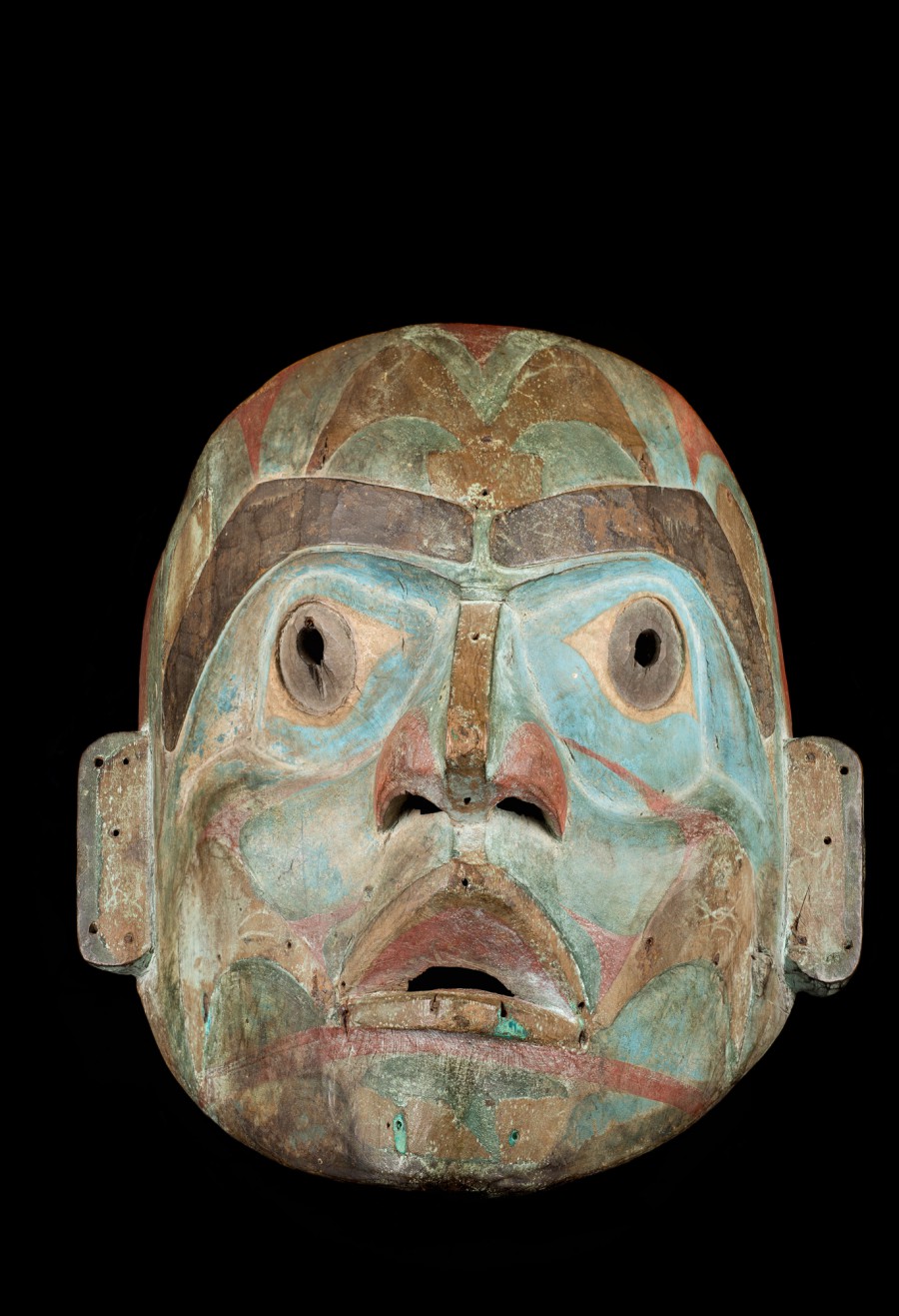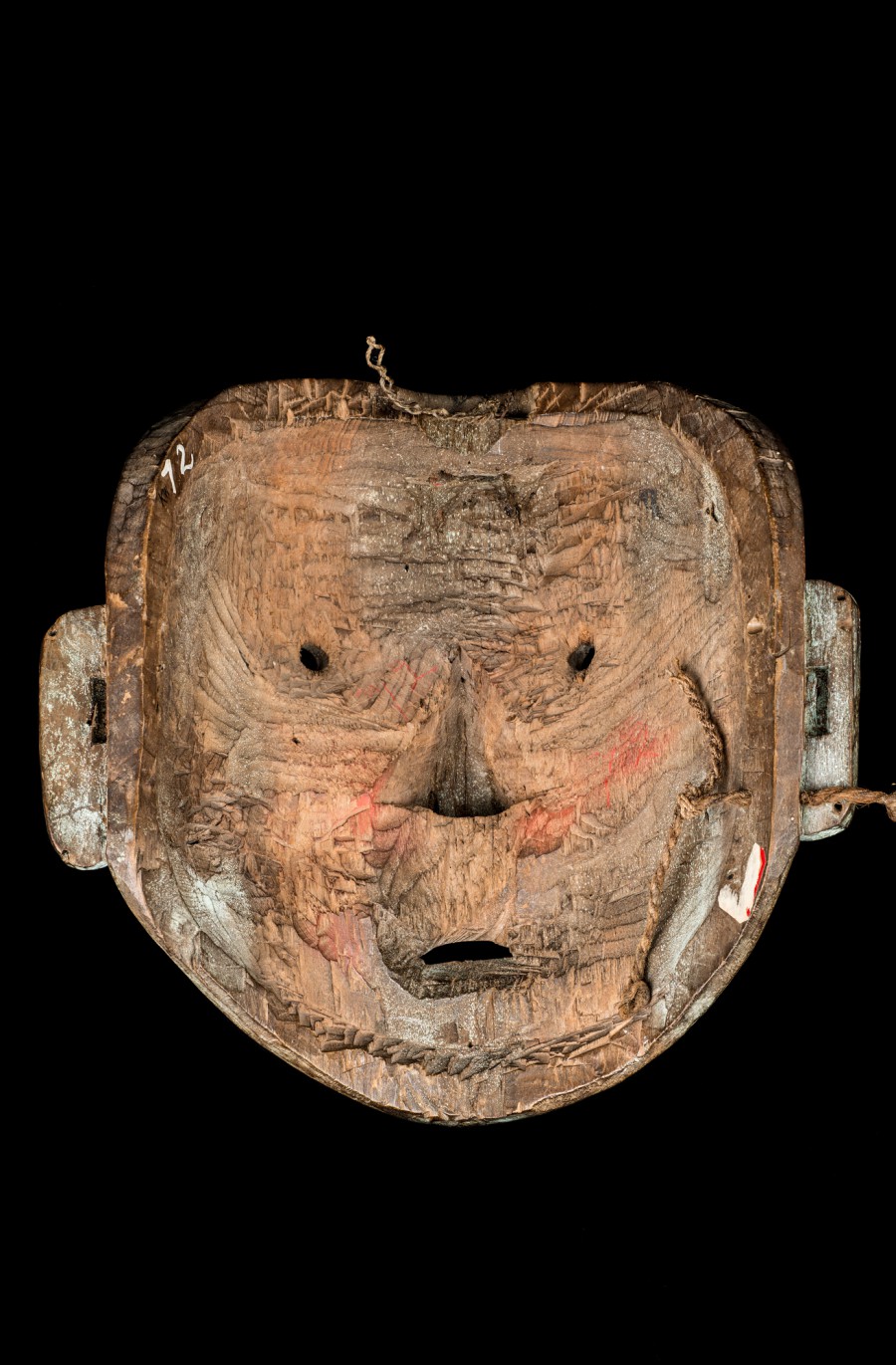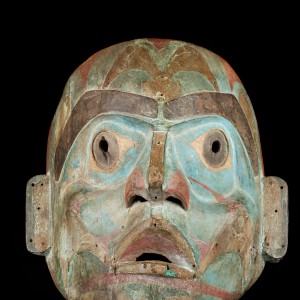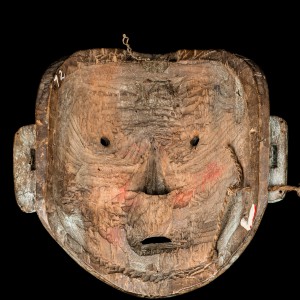Heiltsuk mask
- Date:
- unknown, but before 1893
- Record:
- RBCM 72
This mask is considered an archetype of 19th century Heiltsuk style. It displays characteristics often cited as typical of Heiltsuk carving, particularly the leaf-shaped orb of the eye area, the position of the eye itself, and the arched upper lip. It came into the Royal BC Museum in 1893. The collector, B. Fillip Jacobsen, said it belonged to the Tlaolacha ceremonies of the Bella Bella, referring to an important ceremony called dhuw̓láxˇa, which can be translated as Once more come shimmering down [from the sky]. During this ceremony, the dhuw̓láxˇa initiate disappears midway through a dance performance, supposedly taken up to the heavens by a supernatural spirit. When he reappears he displays the dance and regalia acquired during his sojourn in the spiritual world. Many dhuw̓láxˇa masks have human features, open mouths, and feather-like painted designs. This example once had thin pieces of copper attached to the wood with small nails. The distinctive blue-green colour of the mask is the result of the copper’s oxidization. Traces of red pigment on the inside of the mask are from the dancer’s face paint.



